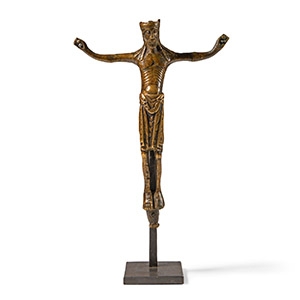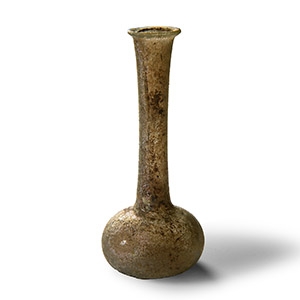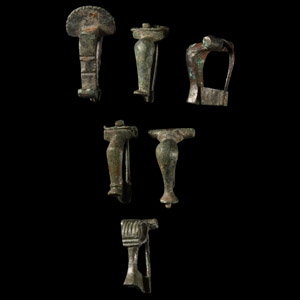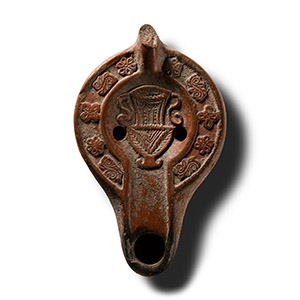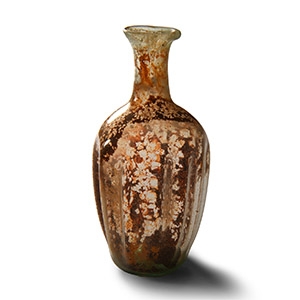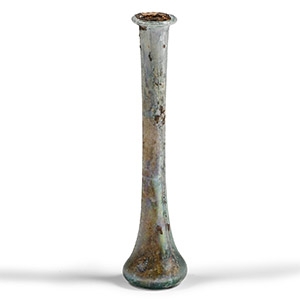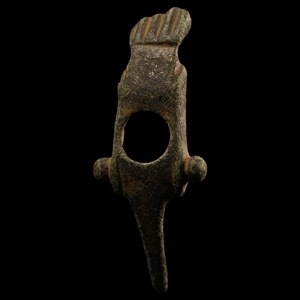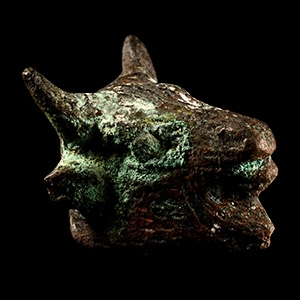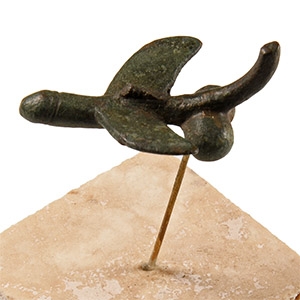Home > Auctions > 5 - 9 March 2024: Ancient Art, Antiquities,
Natural History & Coins
Auction Highlights:
Acquired 1980-2015.
Ex Abelita family collection.
Cf. Whitehouse, D., Roman Glass in the Corning Museum of Glass, vol.1, New York, 1997, item 259.
Ex property of an Austrian private collector since the 1970s.
See Mackreth, D.F., Brooches in Late Iron Age and Roman Britain, Oxford, 2011, for general discussion.
From a collection acquired on the UK art market from various auction houses and collections mostly before 2000.
From an important Cambridgeshire estate; thence by descent.
See Bussière, J., Lindros Wohl, B., Ancient Lamps in the J. Paul Getty Museum, Malibu, 2017, nos.499-500, p.357.
The lamp belongs to the type Atlante X or Hayes II A. The so-called Christian lamps in Terra Sigillata Africana have been classified by Hayes into two major types, I and II. He has distinguished two classes in his type II, according to geographic place of manufacture or origin. Subtype II A group lamps from central Tunisia are characterised by a fine clay, glossy light orange slip, and carefully executed decoration using a great number of neatly drawn shoulder motifs. The kantharos is a fairly common motif in Early Christian imagery, as a container of life giving water.
Ex German art market, 2000s.
Acquired from an EU collector living in London.
From the collection of Surrey, UK, gentleman.
Acquired 1980-2015.
Ex Abelita family collection.
Cf. Whitehouse, D. Roman Glass in the Corning Museum of Glass, vol.1, New York, 1997, item 312.
with a London, UK gallery 1971.
Acquired in the 1990s.
Private collection, Suffolk, UK.
Property of a European gentleman.
Accompanied by a copy of a French cultural passport no.140839.
Acquired 1980-2015.
Ex Abelita family collection.
Cf. Filarska, B., Szkla Starozytne (Ancient Glass) II vol., Warszawa, 1972, II, cat.279, pl.XLVII,6, for similar vial.
During the early Roman period the glass-making techniques used by the Greeks were continued. Much of the glass was buried and as a result acquired an attractive lustrous patination. Roman glass became a medium for the promotion of the emperor and imperial propaganda, as well as being used as containers for various uses. Glass blowing, a new technique, meant that quantities of identical bottles could be produced.
Ex London, UK, collection, 1990s.
Private collection of Mr S.A., Switzerland, 1990s, thence by descent.
Cf. Rolland, H., Bronzes Antiques de Haute Provence, Paris, 1965, item 242, for type.
From the property of the late Mr SM, London, UK, 1969-1999.
From a collection acquired on the UK art market from various auction houses and collections mostly before 2000.
From an important Cambridgeshire estate; thence by descent.
Cf. Beutler, F. et al., Der Adler Roms. Carnuntum und der Armee der Cäsaren, Bad-Deutsch Altenberg, 2017, item 757, for type.
673 - 684 of 2726 LOTS

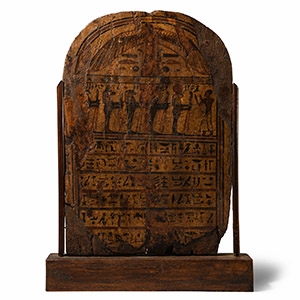
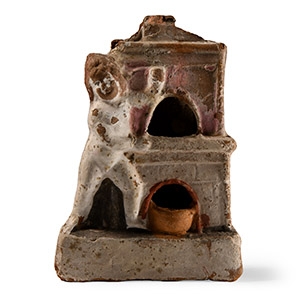

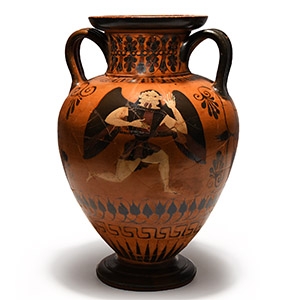
.jpg)
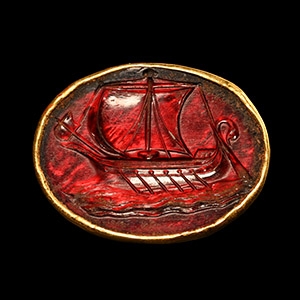
.jpg)

.jpg)
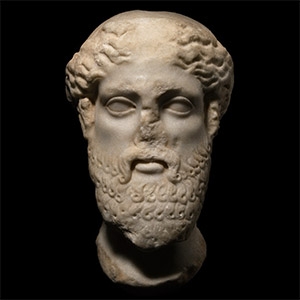
.jpg)
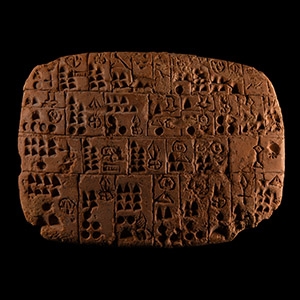

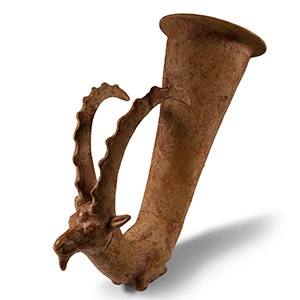
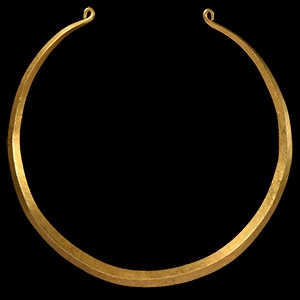
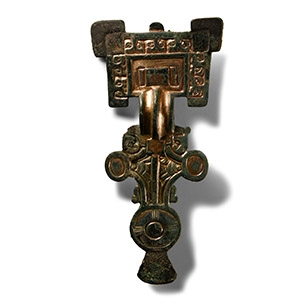
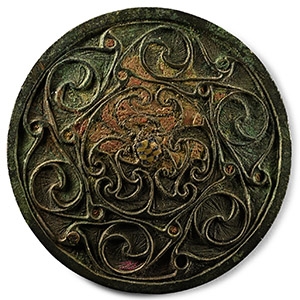

.jpg)
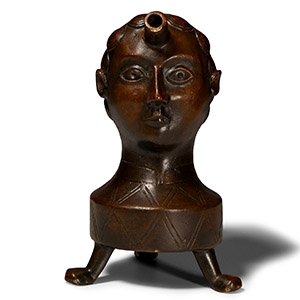
.jpg)

.jpg)
